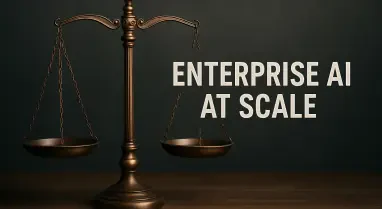In an era where cyber threats evolve at a breakneck pace, the ability to respond to incidents swiftly and effectively has become a cornerstone of digital defense. Imagine a scenario where a sophisticated ransomware attack targets an organization’s critical systems, and within mere minutes, an autonomous system detects the anomaly, isolates the threat, and begins mitigation—all before human analysts are even alerted. This is no longer a distant vision but a reality being shaped by agentic AI, a transformative technology making waves in the cybersecurity landscape. Unveiled through groundbreaking demonstrations at a major industry conference this year, this innovation has shown the potential to cut response times by an astonishing 70%, offering a lifeline to organizations grappling with alert fatigue and resource constraints. As cyber attackers grow more cunning, the urgency to adopt such cutting-edge tools has never been clearer, setting the stage for a deeper exploration of how this technology is redefining the fight against digital threats.
The Rise of Autonomous Cybersecurity Tools
Transforming Theory into Tangible Results
The journey of agentic AI from a conceptual framework to a practical cybersecurity asset marks a significant milestone for the industry. Unlike traditional AI systems that rely heavily on predefined rules and human oversight, agentic AI operates with a degree of autonomy, capable of making decisions and executing actions in real time. At a prominent industry event held recently, experts showcased how these systems integrate seamlessly with existing security infrastructures, such as endpoint detection and response platforms. The results were striking: simulated environments demonstrated a 70% reduction in incident response times, a metric that addresses one of the most pressing challenges in cybersecurity today. By autonomously correlating data from diverse sources, these AI agents pinpoint anomalies with unprecedented accuracy, slashing the window of opportunity for attackers. This leap forward not only enhances speed but also alleviates the burden on overworked security teams, allowing them to focus on strategic priorities rather than routine alerts.
Enhancing Proactive Defense Mechanisms
Beyond accelerating response times, agentic AI is proving to be a game-changer in proactive threat mitigation. Demonstrations at the same industry gathering revealed a 50% improvement in defensive capabilities, particularly against ransomware—a persistent menace in the digital realm. These AI systems simulate potential attack paths, identifying and fortifying vulnerabilities before they can be exploited. Such foresight is invaluable in an environment where threats often outpace human reaction speeds. By integrating with zero-trust architectures, agentic AI further strengthens organizational resilience, ensuring that even if one layer of defense is breached, others remain intact. This multi-layered approach represents a shift from reactive to predictive cybersecurity, where the emphasis lies on preventing breaches rather than merely containing them. As attackers increasingly leverage advanced tactics, the ability of AI to stay one step ahead offers a critical advantage, reshaping how enterprises conceptualize their security posture in a dynamic threat landscape.
Balancing Innovation with Caution
Addressing Emerging Risks and Vulnerabilities
While the promise of agentic AI in cybersecurity is undeniable, it comes with a set of challenges that demand careful consideration. Industry discussions have highlighted potential vulnerabilities, such as the risk of adversaries manipulating AI agents through techniques like prompt injection attacks. Such exploits could turn a powerful tool into a liability if not adequately safeguarded. Additionally, the advent of quantum computing poses a threat to traditional encryption methods, necessitating robust countermeasures as agentic AI scales across enterprises. Experts emphasize the importance of continuous testing and validation to ensure these systems remain secure against evolving attack vectors. Without such diligence, the very technology designed to protect could become a point of weakness. As adoption grows, the focus must remain on building resilient frameworks that anticipate and neutralize risks, ensuring that innovation does not outstrip security in the race to automate cyber defenses.
Ethical and Governance Considerations
Equally critical to the deployment of agentic AI are the ethical implications and the need for strong governance. When autonomous systems make decisions that impact privacy or escalate conflicts without human input, questions of accountability arise. Industry leaders stress the importance of establishing clear guidelines to ensure that AI actions align with organizational values and legal standards. Lessons from past technological rollouts show that regulation often lags behind innovation, a gap that must be bridged to prevent unintended consequences. Discussions at recent conferences underscored the need for transparency in how AI agents operate, particularly in high-stakes environments where errors could have significant repercussions. By fostering a culture of oversight and ethical responsibility, the cybersecurity community can harness the benefits of agentic AI while mitigating its risks. This balanced approach is essential to building trust in autonomous systems, ensuring they serve as allies rather than unchecked forces in the digital domain.
Reflecting on a New Era of Digital Defense
Pioneering a Path Forward
Looking back at the insights shared at this year’s major cybersecurity conference, it was evident that agentic AI had emerged as a cornerstone of modern defense strategies. The technology’s ability to reduce response times by 70% and bolster proactive measures by 50% stood as a testament to its transformative impact. Industry experts and vendors alike showcased real-world applications that moved beyond hype, delivering measurable outcomes in simulated and live environments. Partnerships and innovations further amplified this momentum, signaling a collective push toward integrating AI with existing frameworks like zero-trust models. The consensus was clear: agentic AI had tipped the scales in favor of defenders, offering a powerful tool to combat an ever-evolving threat landscape with precision and speed.
Charting the Next Steps
As the dust settled on these discussions, the path forward became one of cautious optimism and strategic action. The remarkable strides made by agentic AI in slashing response times were undeniable, but so too were the challenges of securing against new vulnerabilities and ensuring ethical accountability. Moving ahead, the industry must prioritize the development of robust safeguards and governance models to address risks like prompt injection and quantum threats. Collaborative efforts between technology providers, enterprises, and regulators will be crucial in shaping a future where automation enhances rather than undermines security. By pairing human expertise with AI-driven precision, cybersecurity can evolve into a more resilient and adaptive field. The focus now shifts to scaling these innovations responsibly, ensuring that the promise of faster, smarter defenses becomes a sustainable reality for organizations worldwide.






